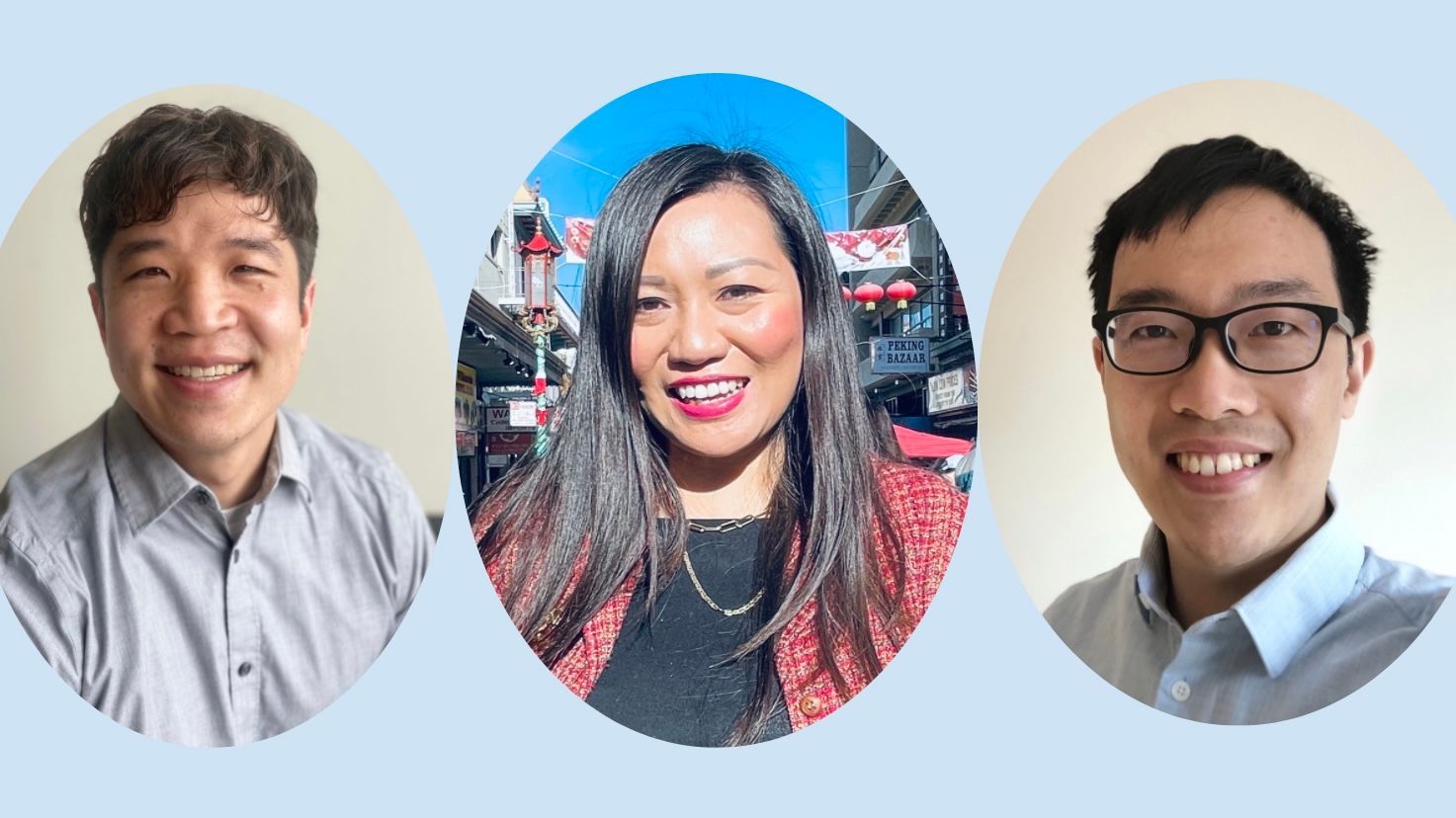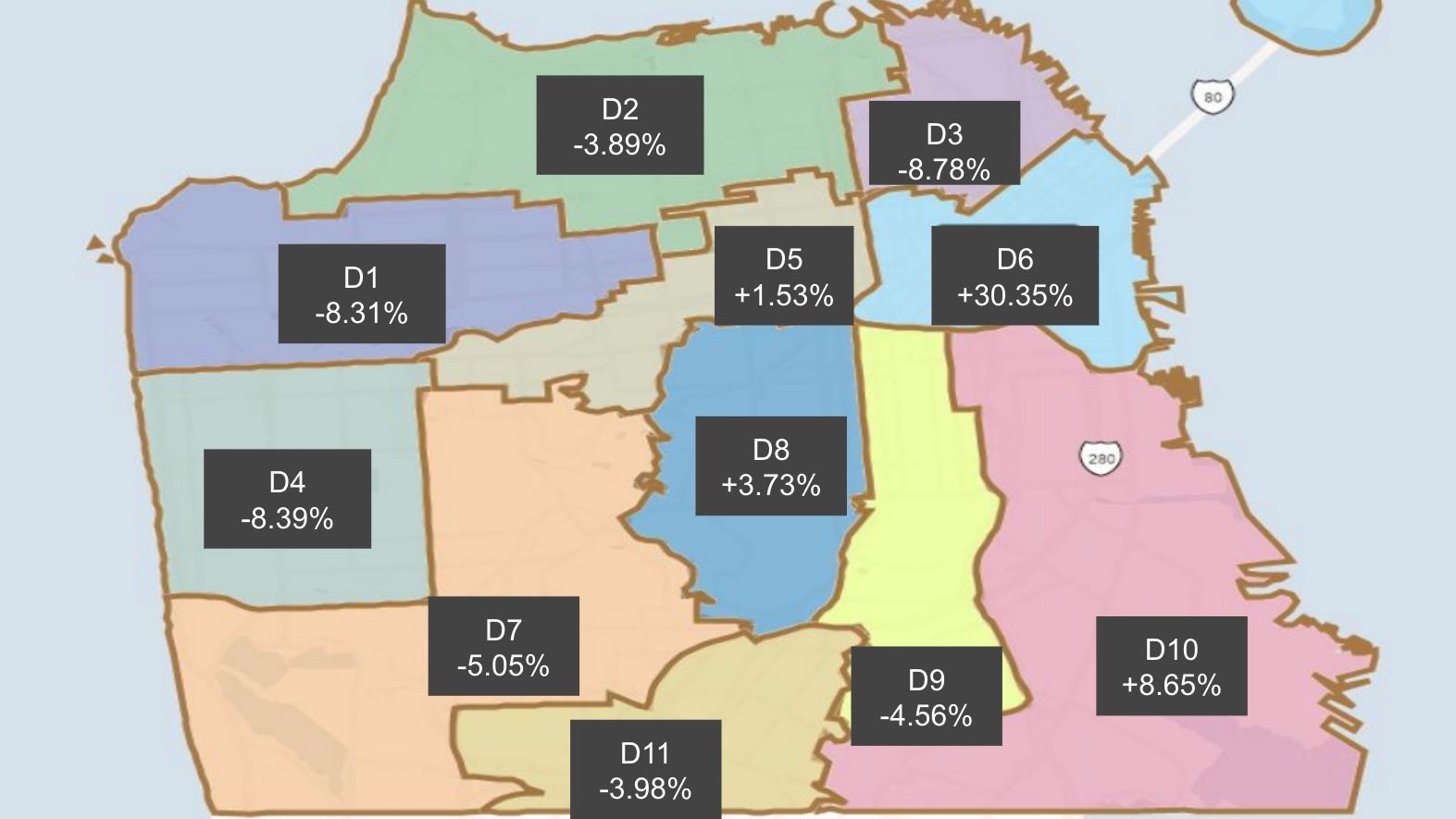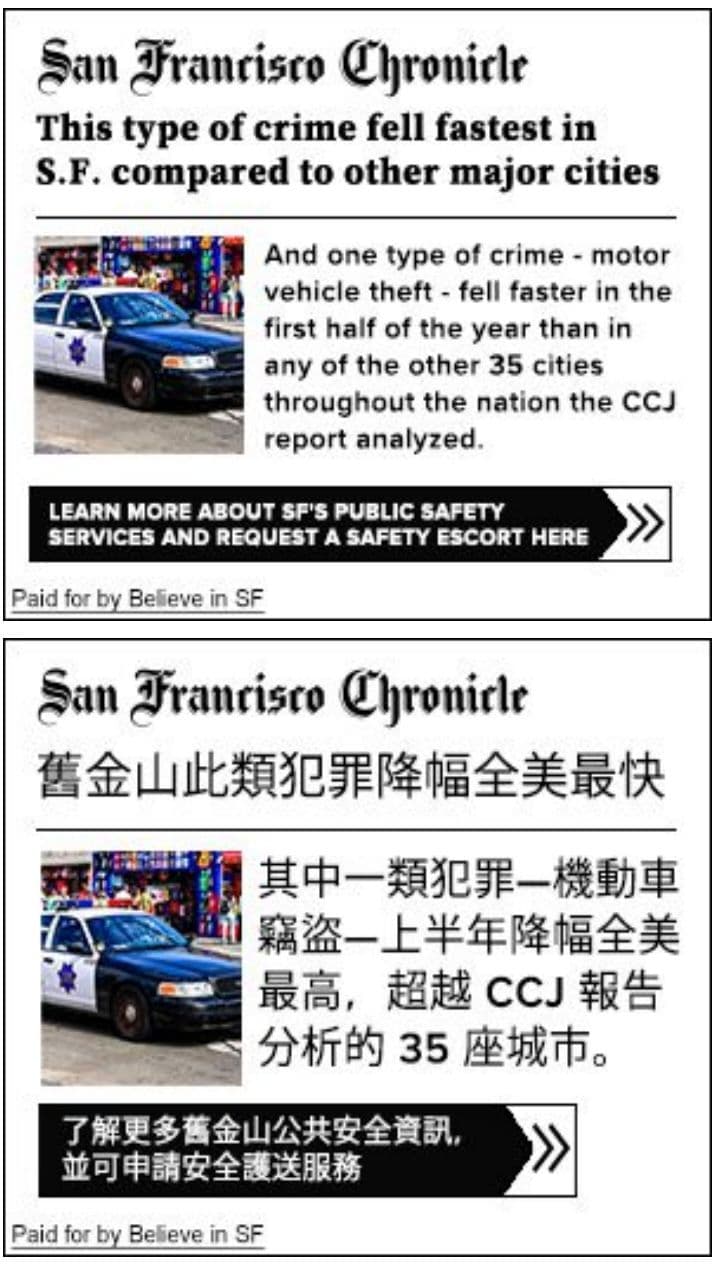Three Chinese Americans appointed to the 9-member task force redrawing SF supervisorial districts


(SAN FRANCISCO) During the past 10 years, two major Asian neighborhoods, Portola and Visitacion Valley, are under two separate supervisorial districts, District 9 and District 10. But both neighborhoods share a great number of similarities on many issues. Leaders of both neighborhoods are hoping that the new redistricting map which will be finalized by April 15 will combine them into one district.
San Francisco 2020 Census Redistricting Task Force was formed in July 2021. Nine members of the task force are appointed by the Mayor, Board of Supervisors and Election Commission, three appointments by each entity.
Three young Chinese Americans, Lily Ho, Jeremy Lee and Chasel Lee, are appointed by Mayor London Breed, Board of Supervisors and Election Commission respectively. A series of public meetings had been held virtually in 2021 for planning purposes. The first public meeting in 2022 was held on January 3. In the meeting, the task force members approved to host the in-person public meetings for each supervisorial district to hear the concerns from that district.
Jeremy Lee urged the task force in the meeting to host the in-person public meetings on weekends to maximize the involvement from the community.
The task force announced three in-person meetings scheduled in the month of January for three districts, Districts 6, 5 and 3.
District 6 public meeting will be held on January 14, 3:00PM, at City Hall, Room 400.
District 5 meeting will be held on January 22, Saturday at 10:00 AM, at Third Baptist Church, 1399 McAllister Street.
District 3 meeting will be held on 1/29/2022, Saturday at 10:00 AM, in First Congregational Church, 1300 Polk Street.
Ho, Jeremy Lee and Chasel Lee all encourage the Chinese and Asian community to participate in the process of redistricting all 11 supervisorial districts.
The latest 2020 census data indicates that the population in San Francisco has risen to a record high of 874,994. There is an increase of 9.69% from the population of 805,235 in 2010 which was also a record number. The 2000 population in San Francisco was 776,733.
In 2020, white is the largest ethnic group in San Francisco with 46.41%. Asian population comes in second at 34.4%. Among the Asians, Chinese represents the single largest ethnic minority with 21.4% in the city population. Hispanic represents 15.2% of the population and African Americans have dropped to 5.21%.
The 2020 census data also indicates that there is a big move of the population in San Francisco during the past 10 years from the west side to the east side.
The population in District 6, which encompasses SoMa, Mission Bay, the Tenderloin and Treasure Island, has a more substantial increase of 30.35% than any other districts compared to the population in 2010. All other districts with an increase are located in the east side of the city, due to more new high rise and affordable housing to be built within the last 10 years. Some of the residents might move from the west to the east side of the city.
District 10 which covers Bayview, Visitacion Valley and Potrero Hill has a significant increase of 8.65% than 10 years ago. More Asian and Chinese new immigrants have moved in the district during the past 10 years.
Even though the Asian population in San Francisco has reached 34%, there are currently two Chinese American Supervisors, Gordon Mar represents District 4 and Connie Chan represents District 1, among the 11 Supervisors and the number is much below the Asian population.
With a huge Asian population in Portola and Visitacion Valley, the Chinese community strongly believes that it would have a bigger potential to elect an Asian American to represent both neighborhoods if they can be drawn into one district.
The residents in Portola and Visitacion Valley have their social and economic status in common. Both neighborhoods' residents ride the same buses, Line 8, to and from Chinatown and downtown. They share the same commercial corridor on San Bruno Avenue. The residents in both neighborhoods are more working class and face similar crime challenges.

"Visitacion Valley is called a forgotten valley," said Marlene Tran who ran for District 10 Supervisor twice and lost in the races. The political power of both neighborhoods were diluted in the redistricting process 10 years ago. The Chinese community in both neighborhoods are not able to have a fair share of the city resources.
"Since the pandemic in 2020, the seniors and the most vulnerable community members in Chinatown and other more neighborhoods have been able to receive free meals weekly. So far our seniors have not received a single lunch box until now," said Jenny Mak, a Visitacion Valley leader, who is very frustrated to see her neighborhood that has been continuously overlooked by the city.
Violent crime against the Asian residents in Portola has been a pattern for many years. Hazel Lee, a community leader in Portola, organized a town hall meeting on crime in 2017. Over 300 residents who were mostly of Chinese descent packed the room and demanded more police presence in the neighborhood. A walk-in center staffed with Chinese speaking police officers was established by the Police Department since then.
Lily Ho founded "Delta Chinatown Initiative" in 2021
Ho is a new activist in Chinatown since the pandemic in response to the anti-Asian hate sentiment. She was born and raised in San Francisco as the second generation of Chinese American immigrants. "I grew up in the Richmond District, and attended Chinese school on Saturdays at Nam Kue School in Chinatown," Ho recalled that her parents wanted her to learn the language from a very young age.
Ho is a graduate of Lowell High School and UC Riverside majored in Economics. She had worked in the State Capital in Sacramento after college at different state government offices. She earned a master's degree in business from UC Davis. She returned to San Francisco in recent years and had once worked at a political consultant firm.
" I founded Delta Chinatown Initiative during the pandemic to advocate for families and children living in SROs, install security cameras in Chinatown, and raise awareness about victims rights," said Ho, who also organized petition drives to recall the School Board members last year.
"I am committed to ensuring the redistricting process is inclusive, AAPI communities remain intact and are not diluted, and all San Franciscans receive fair and equal representation. It's important that the AAPI community feels empowered to participate and have their voices heard in this very important process, because redistricting impacts local representation for the next 10 years," said Ho.
Jeremy Lee traveled in China, studied Chinese in Taiwan and Hong Kong
Jeremy Lee is a third generation of Chinese American growing up in South San Francisco. "I was growing up in South City with the biotech companies nearby. So I majored in Biology at UC San Diego in college," said Jeremy Lee. He studied abroad at Chinese University of Hong Kong for a year when he was in college, then taught English in Taiwan for one and half years after college, and traveled extensively in China.
After working at a biotech company in Novato for some time, Jeremy Lee decided to change his career to non-profit organizations serving the community. Presently, Jeremy Lee is the asset manager at Chinatown Community Development Center and Vice President of the Rose Pak Democratic Club. He has been a volunteer for many election campaigns, including his first campaign as a volunteer for Former Supervisor Jane Kim running for state senator.
Chasel Lee born in Chinatown, grew up in Visitacion Valley
Chasel Lee was born in Chinatown and raised in Visitacion Valley in a Chinese immigrant family. He is a graduate of Lowell High School, UC Berkeley in Political Science and George Washington University Law School. Now he works as an attorney for the State of California focusing on public utilities and wildfire safety issues.
He started becoming politically involved when Chasel Lee worked as a City Hall intern for then-supervisor David Chiu in 2009. Since then, he volunteered for a large number of political campaigns and participated in various organizations.
"Growing up in a working-class neighborhood in San Francisco's southeastern neighborhoods taught me that representation and political empowerment are not simply abstract notions. The lack of both defined my neighborhood and the growing AAPI community in the area. The absence of organizational activism caused my community's needs to constantly be forgotten, " said Chasel Lee.
Chasel Lee hopes that the Chinese community will be actively involved in the redistricting process and goes beyond just listening. "We have seen increasing AAPI political engagement as a result of the pandemic and a rise of a new generation of AAPI activism due to the ongoing wave of anti-Asian hate. For too long, AAPI communities have been silent or silenced, with their interests and aspirations ignored. San Francisco's redistricting, which redraws the 11 supervisorial districts, can empower communities by giving them sufficient heft to make elected officials responsive to their needs. San Francisco's redistricting can also silence them by scattering communities across districts and diluting their voice."
- Tech entrepreneur & political advisor Saikat Chakrabarti runs for Congress to fill Nancy Pelosi’s House seat
- Kenneth Binder appointed as San Mateo County Sheriff for a 3-year term
- U.S. Representative Nancy Pelosi to retire in Jan 2027 after 40 years in Congress representing San Francisco
- New federal and state rules on eligibility of public benefits to affect undocumented, non-citizen immigrants from Jan. 1, 2026
- Three finalists among seven candidates named for the next San Mateo County Sheriff
- Police search for man who allegedly stole two 28-inch-tall popular Labubu dolls worth of thousands of dollars
- San Francisco launches a new $3.6 million Downtown SF Vibrancy Loan & Grant Fund to encourage small businesses to fill vacant storefronts in downtown
- SNAP (Food Stamps) to stop issuing funds in November, participants begin to save current benefits for future food






